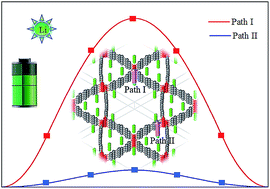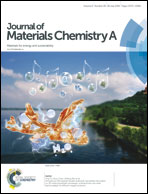A new 3D Dirac nodal-line semi-metallic graphene monolith for lithium ion battery anode materials†
Abstract
Due to the limited specific capacity of graphite, it is highly desirable to develop new alternatives for high performance lithium ion battery (LIB) anode materials. Motivated by the recent synthesis of three-dimensional (3D) graphene (Phys. Rev. Lett., 2016, 116, 055501), here we propose a new 3D graphene monolith, termed HZGM-42. State-of-the-art theoretical calculations uncover that HZGM-42 not only possesses high thermodynamic stability, anisotropic elasticity and high specific strength, but also exhibits a unique electronic band structure with Dirac nodal-lines. Equally important, HZGM-42 shows excellent electrical conductivity and uniformly distributed channels for the transport of Li ions with fast kinetics. As compared to the commercially used graphite anode, HZMG-42 possesses a much higher theoretical specific capacity (637.71 mA h g−1), a much lower energy barrier (0.02 eV) for Li ion diffusion along the one-dimensional channels, and a much smaller volume change (2.4%) during charging and discharging operation. This study expands the family of 3D porous carbon materials with great potential for LIBs.



 Please wait while we load your content...
Please wait while we load your content...
